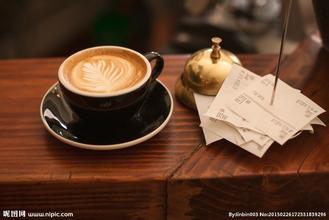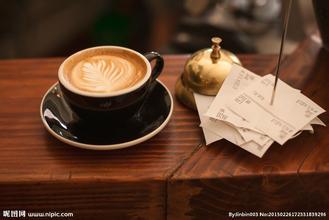Aroma saturated Burundi coffee varietyRegional flavor Fine coffee beans Description
There are different flavors of coffee, so you can't drink three or four cups in a row like tea or cola, but the formal coffee cup is the best. Ordinary coffee to 80-100cc for the right amount, sometimes if you want to drink three or four cups in a row, then it is necessary to dilute the concentration of coffee, or add a lot of milk, but still take into account the degree of physical needs, to add or reduce the concentration of coffee, that is, do not cause greasy or nauseous feeling, and in the allocation of sugar might as well be more changes to make the coffee more delicious. Drinking hot coffee is a necessary condition for tasting delicious coffee, even on a hot summer day. Burundian coffee was introduced by Belgian colonists in 1930 and is now grown only on small farms. Unfortunately, many of these farms are on the border with war-torn Rwanda, putting pressure on coffee production. Almost all coffee produced in Burundi is Arabian coffee beans, while coffee trees in Ngozi are planted at an altitude of more than 1200 meters. Burundian coffee has a rich aroma and excellent acidity, and most of its products are exported to the United States, Germany, Finland and Japan, which bear striking similarities to neighboring Rwanda, where coffee is often confused. Burundian coffee is mainly grown in bourbon, with traditional wet processing of coffee cherries. Its boutique coffee is characterized by elegant sweetness and bright citrus aromas.
Burundi is a small landlocked country located at the junction of eastern and central Africa, across the Nile and Congo basins, dominated by hills and mountains, with excellent coffee-growing elevations. The history of coffee cultivation in Burundi is not long, its coffee planting industry is carried out entirely in the form of small family farms, there is a great difference in quality, and years of war and social unrest have made its coffee planting industry very chaotic. But I have to admit that here has the potential to produce high-quality coffee, strong taste and aroma, fragrance and fragrance are different from most of the sweet and mild coffee in the market.
There is a very high level of gold. The fragrance of dried incense is so strong that it is more colorless than it is, and you can feel it at the entrance.
Very melancholy, vanilla-like taste, wild feeling, dark coffee, low acidity, low acidity
It is slightly easier than Ken, and it has the inherent characteristics of non-bean, and it is also special.
Taste features: honey, kumquat, purple mackerel flower fragrance, acidity, smooth taste, fragrant and sweet,
Rich through the introduction of the Belgian people, Bloomberg began to grow coffee in 1930, and most of the varieties are bourbon series, and coffee grows on mountains ranging from 1750 to 2000 meters above sea level.
The first Burundian Arabica coffee shop was introduced by Billy in the 1930s and continues to this day.
More than 800,000 Bloomberg families live on coffee, and most of them rely on small-scale coffee bars.
The varieties of coffee coffee are mostly Bourbon and Jackson and Mibirigy of the same Bourbon system, and the processing methods are washed and semi-washed.
In the past, most of them were exported to Belgium, Germany, Netherlands, Japan, Australia and the United States.
Coffee export has become an important economic source of Bloomberg, and the country is mainly distinguished from the famous coffee producing areas.

Important Notice :
前街咖啡 FrontStreet Coffee has moved to new addredd:
FrontStreet Coffee Address: 315,Donghua East Road,GuangZhou
Tel:020 38364473
- Prev

Introduction to the description and taste of high-quality coffee beans in Puerto Rico coffee producing areas
The characteristics of Puerto Rico coffee: Yaocote is a fascinating coffee, it has a complete flavor, no bitterness, rich nutrition, worth tasting. Even Thales in Harrogate, UK, has imported 50 bags of Yaoke specialty coffee. Flavor: full granule, full flavor, rich aroma suggested baking method: medium baking ★★★: excellent wave
- Next

Uganda coffee varieties producing area characteristics boutique coffee beans flavor estate introduction
There was an emirate called Kitara in western Uganda in the 13th century AD. In the thirteenth and fourteenth centuries, the country was conquered by the nomadic tribe of the Bachivezi. From the end of the 15th century to the beginning of the 16th century, the Luo people originally residing in southern Sudan moved south to replace the rule of the Bachiwezi people and established the Kingdom of Bunoro and the Babito Dynasty in Buganda. These foreign rulers were soon employed locally as farmers
Related
- Detailed explanation of Jadeite planting Land in Panamanian Jadeite Manor introduction to the grading system of Jadeite competitive bidding, Red bid, Green bid and Rose Summer
- Story of Coffee planting in Brenka region of Costa Rica Stonehenge Manor anaerobic heavy honey treatment of flavor mouth
- What's on the barrel of Blue Mountain Coffee beans?
- Can American coffee also pull flowers? How to use hot American style to pull out a good-looking pattern?
- Can you make a cold extract with coffee beans? What is the right proportion for cold-extracted coffee formula?
- Indonesian PWN Gold Mandrine Coffee Origin Features Flavor How to Chong? Mandolin coffee is American.
- A brief introduction to the flavor characteristics of Brazilian yellow bourbon coffee beans
- What is the effect of different water quality on the flavor of cold-extracted coffee? What kind of water is best for brewing coffee?
- Why do you think of Rose Summer whenever you mention Panamanian coffee?
- Introduction to the characteristics of authentic blue mountain coffee bean producing areas? What is the CIB Coffee Authority in Jamaica?

